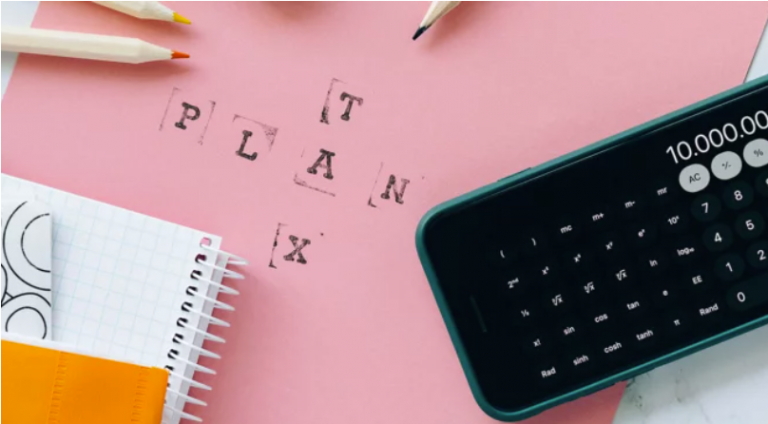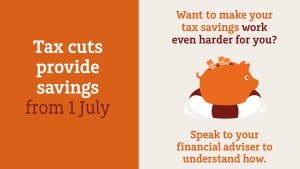Do you want to get more from your tax return this financial year, but you’re not sure where to start? It could be as simple as knowing which tax deductions and offsets you’re eligible for.
With the end of financial year fast approaching, you might be hoping to claw back some of your hard earned cash when you lodge your tax return this year.
The Australian Taxation Office refunds billions of dollars to individual taxpayers each year, so it’s worth taking the time to maximise your return.
How do I get a tax refund?
A tax refund is a reimbursement of any excess tax you’ve paid to the government during the financial year. The ATO will work out whether you’re eligible for a tax refund based on the details you supply in your annual tax return.
Generally, a refund comes about when you claim deductions for expenses related to earning your income. You may also qualify for certain tax offsets, which directly reduce the amount of tax payable on your taxable income.
You’ll need to keep written records to prove your claim, so stay on top of your paperwork throughout the year. Here are some of the more common deductions and offsets you might be eligible for.
Working from home
If you’re working from home, you’re eligible to claim deductions for certain work-related expenses. The easiest way to work out your deduction is using the temporary ‘shortcut method’ introduced last year. It allows you to claim a deduction of 80 cents for each hour you work from home. You’ll need to keep a record of the hours you worked, in the form of a roster, diary, timesheet or similar to prove your claim.
Alternatively, you can still use the Fixed Rate Method or Actual Cost Method which were in place before COVID-19.
Read more: What you can claim when working from home
Personal protective equipment (PPE)
During the COVID-19 pandemic, if you’re working in an industry where you come into contact with the public, you might be able to claim a deduction for the cost of personal protective equipment (PPE).
Things you can claim include purchasing a face mask to wear at work, and other PPE such as gloves and hand sanitiser, but only if you meet certain requirements:
- your job requires you to be at your place of work
- a face mask isn’t provided by your employer
- you’re in close contact with other people, such as clients, customers and colleagues, or
- you’re cleaning a premises.
Check the ATO website for more information.
Other work-related expenses
Even if you don’t work from home, you may still be eligible to claim a deduction for certain work-related expenses. Some of the most common deductions include:
- Vehicle and travel expenses
- Self-education
- Tools and equipment
- Clothing, laundry and dry-cleaning
- Other work related deductions.
Remember, the expense must relate directly to earning your income and you can’t claim a deduction if you were already reimbursed for the expense by your employer.
What if my income comes from investments?
If some or all of your income is from investments, dividends or interest, you can claim a deduction for certain expenses you incur while earning that income. This includes things like:
- Account keeping fees
- Interest charged on money you borrow to purchase the investment (e.g. shares or property).
Because investment deductions can be complicated, always seek help from a tax professional to help maximise your return.
Superannuation tax offsets
No matter your income, there’s a few handy ways you can boost both your super balance and your tax refund.
If your spouse or partner earns less than $37,000 this financial year, and you contribute $3000 to their superannuation account, you could be eligible for a $540 tax offset. If your spouse earns up to $40,000, you may still be eligible for a part-offset amount.
Tax deduction for personal super contributions
For some people, making top-up concessional super contributions is an effective way to reduce your taxable income. It works like this: You’re allowed to claim a tax deduction for the amount of any personal, ‘after-tax’ super contributions you make in a financial year (e.g. from your take home pay), up to your concessional contribution limit. The contribution is then taxed at 15 per cent in your super fund, instead of at your marginal tax rate. So depending on your income, this could mean a tax saving.
There are eligibility requirements and you need to let your super fund know in advance using a Notice of intent to claim form. Speak to a financial advisor to find out if this strategy is right for you.
Government super co-contribution for low income earners
Not a tax refund as such, but this is a great way for low-income earners to top-up their super balance at tax time. If you earn less than $39,837 and you make an after-tax contribution of $1000 to your super, the federal government will provide a $500 co-contribution. If you earn up to $54,837, you’re still eligible for a part contribution, provided you meet all the eligibility criteria.
Last, but not least, it’s worth mentioning that costs associated with preparing your tax return are tax deductible – so don’t hesitate to consult a professional tax adviser.
This article appeared here, and was published by Money & Life.
Disclaimer: The views expressed in this publication are solely those of the author; they are not reflective or indicative of Financial Services Partners position and are not to be attributed to Financial Services Partners. They cannot be reproduced in any form without the express written consent of the author. The information provided in this document, including any tax information, is general information only and does not constitute personal advice. It has been prepared without taking into account any of your individual objectives, financial situation or needs. Before acting on this information you should consider its appropriateness,
having regard to your own objectives, financial situation and needs. You should read the relevant Product Disclosure Statements and seek personal advice from a qualified financial adviser. From time to time we may send you informative updates and details of the range of services we can provide. If you no longer want to receive this information please contact our office to opt out. Financial Services Partners Pty Ltd ABN 15 089 512 587, AFSL 237590







